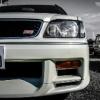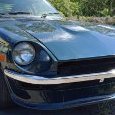Roll Centre measurement and adjustment
Announcements
-
Similar Content
-
Latest Posts
-
How's your first born doing? 😛 As for now what? Time to forget about it for 12 to 18 months while your go down a totally unrelated rabbit hole... 😛
-
Fuse taps are perfectly fine to use, especially when you're adding stuff for your own car, and so long as you're being smart about it. IE, don't throw a 30amp circuit, onto a circuit that is only a small circuit. It's best to add a small circuit, to one that is already quite large. Oh, and make sure you're not going to blow the fuses that are further upstream too! I dislike their use in other applications, such as alarms, telematics/tracking devices etc, as it's far too easy for someone to unplug them and render a system useless. Those sorts of devices I go for wiring in quite secretively.
-
By DraftySquash · Posted
Fob is all cleaned up and it’s working well!! The amount of Vegemite looking sh*t that was in there is mind blowing -
Given it is temporary, I bought a cheapy gauge mount (which has become enflattened) which I will screw into the existing phone mount Also a first for me; given this is a temporary install I could not think of any reason not to use one of those "add a fuse" thingies to source the battery and IGN power. I had always figured they were pretty dodgy but having a good look at them I think they are a valid option for sourcing power from an existing source without cutting


.thumb.JPG.cf2120a7648a369e8c7c30f420c0479a.JPG)




Recommended Posts
Create an account or sign in to comment
You need to be a member in order to leave a comment
Create an account
Sign up for a new account in our community. It's easy!
Register a new accountSign in
Already have an account? Sign in here.
Sign In Now